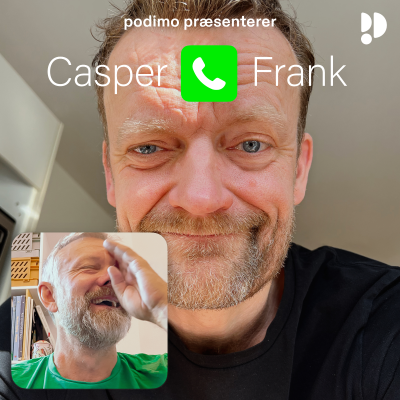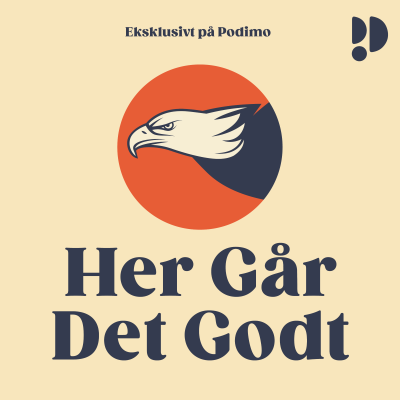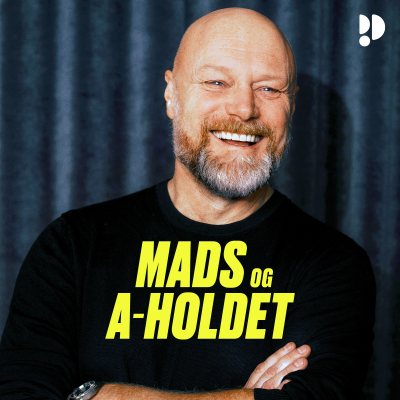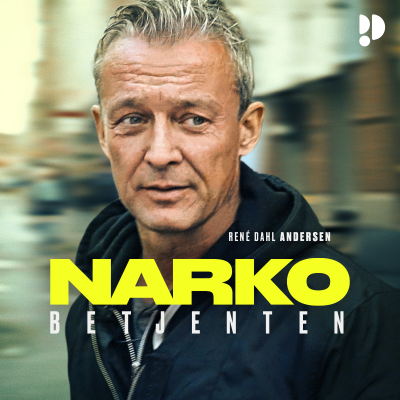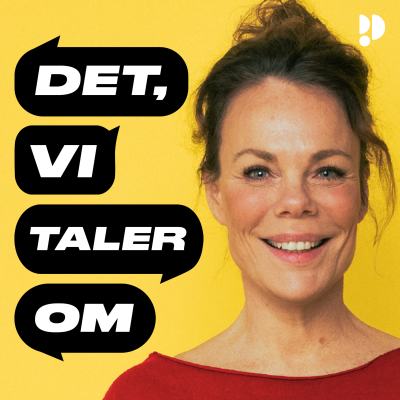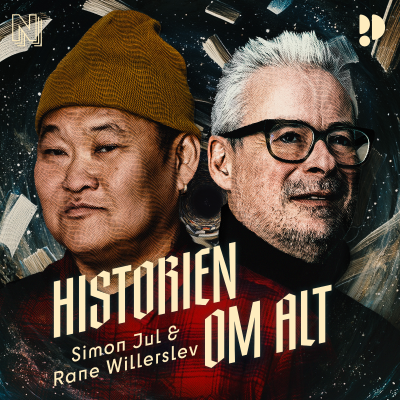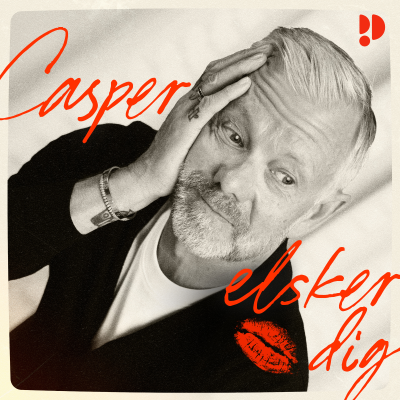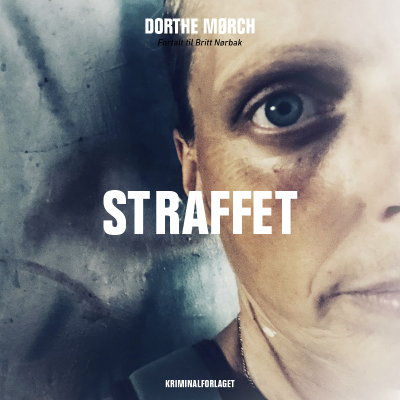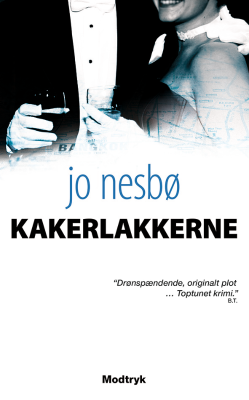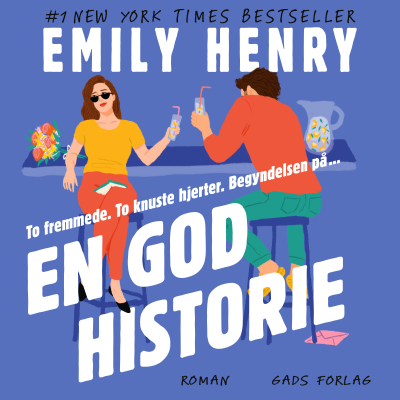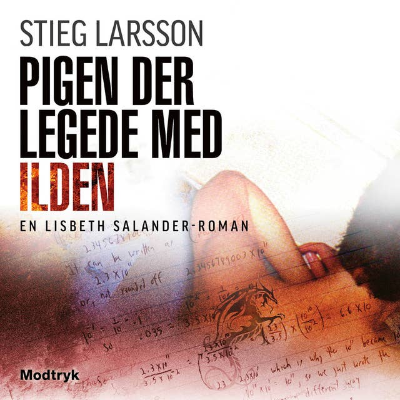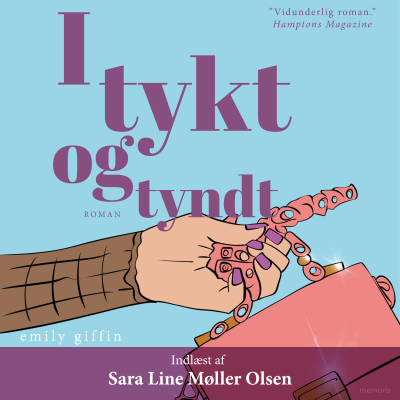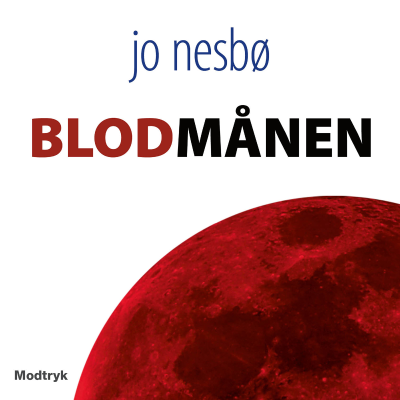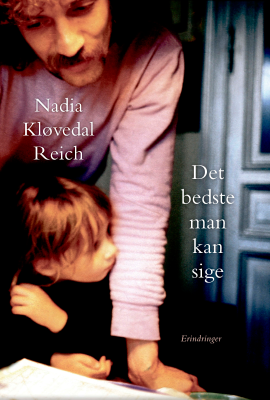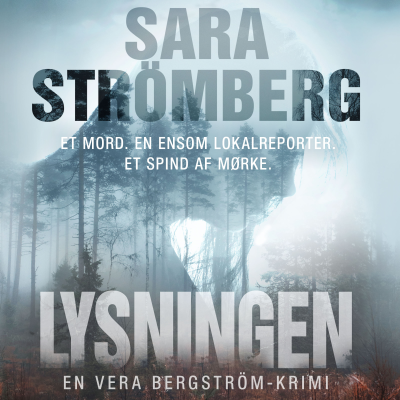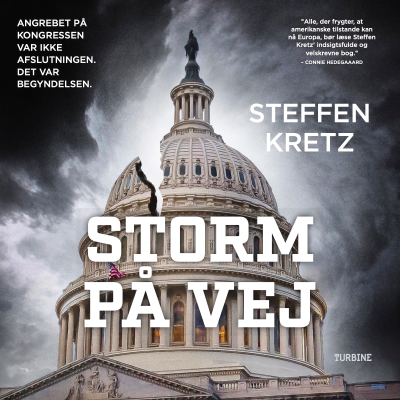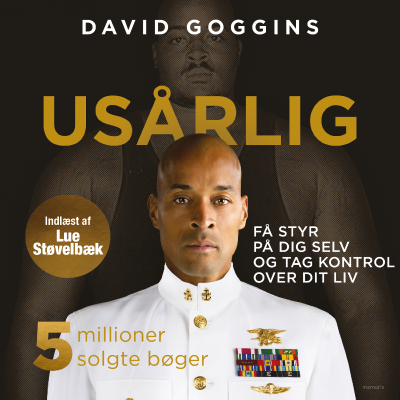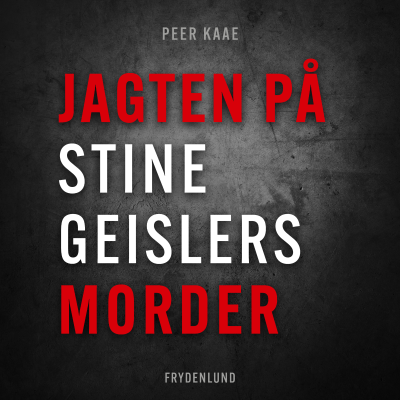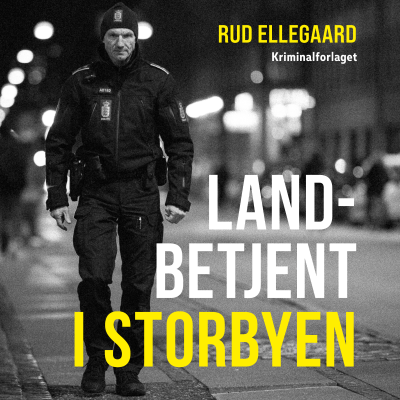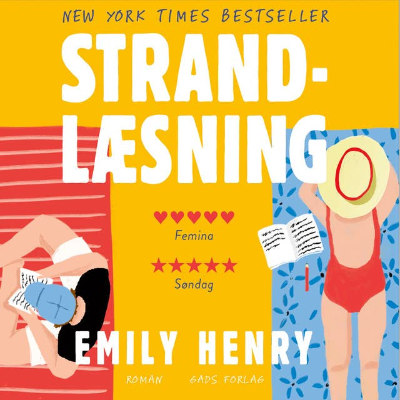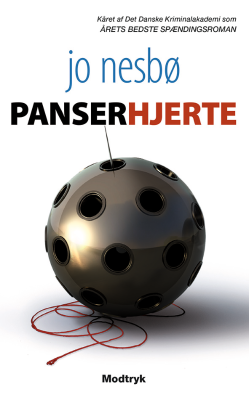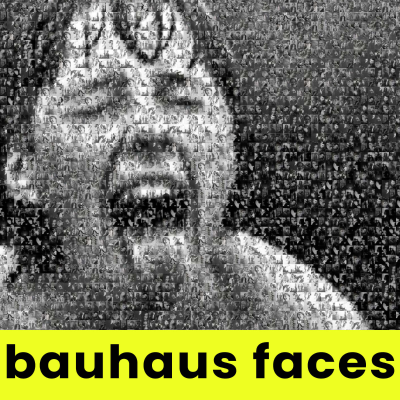
bauhaus faces
Podcast af Anja Guttenberger
Begrænset tilbud
1 måned kun 9 kr.
Derefter 99 kr. / månedIngen binding.

Mere end 1 million lyttere
Du vil elske Podimo, og du er ikke alene
Rated 4.7 in the App Store
Læs mere bauhaus faces
Have you ever wondered why the Bauhaus art school became so famous that it is today still important for designers, artists, architects, and art historians all over the world? It was mainly because of the various talented men and women that made the Bauhaus so multifaceted, colorful, and interesting. The new "bauhaus faces" podcast is dedicated to the fascinating life stories of students and teachers of the legendary and infamous Bauhaus. Each episode will highlight a unique Bauhaus personality. With descendants, researchers, and authors I will navigate you through each personal Bauhaus story.
Alle episoder
21 episoder"Bill always said that he also went to the Bauhaus to find clarity. And that is a process. You don't just have clarity, you have to earn it." (Angela Thomas) For this brand-new episode, I travelled to Zumikon to visit Angela Thomas and Erich Schmid in their house - the Bill Haus. This house, which looks somehow unremarkable from the outside but is amazingly light, open, and welcoming and on the inside, was built by the Swiss architect and designer Max Bill in 1967–68. His second wife and widow, Angela Thomas, lives there today with her husband, the filmmaker Erich Schmid, who made a film about Bill entitled “Max Bill – Das absolute Augenmaß/The master's vision”. Max Bill established himself in art history as the architect and first director of the Hochschule für Gestaltung in Ulm (also known as HfG Ulm or in English the Ulm School of Design). And that is exactly the reason why I also interviewed the head of the HfG Ulm archive, Martin Mäntele, regarding all questions around the official successor of the Bauhaus. Because that is what Bill intended to do in Ulm – to continue the Bauhaus as if it had never been closed in 1933. And he had Walter Gropius’s blessing, too, and the financial support by the Americans. LOOK OUT FOR 2 BONUS EPISODES with the original Interviews that will be published in the next 2 weeks! ---------------------------------------- SHOW NOTES bauhausfaces.com [https://www.bauhausfaces.com] | @bauhausfacespodcast [https://www.instagram.com/bauhausfacespodcast/] MAX BILL HAUS https://www.maxbill.ch [https://www.maxbill.ch] ANGELA THOMAS [https://www.maxbill.ch/?0,3,0,] ERICH SCHMID [https://erichschmid.ch/page.php?0,0,] HFG ULM ARCHIVE https://www.hfg-ulm.de FILM „Das absolute Augenmaß“ by Erich Schmid https://www.erichschmid.ch/page.php?2,3,4,6,0, BOOKS ABOUT MAX BILL Angela Thomas: A Subversive Gleam: Max Bill and His Time. 1908–1939, 2022 Angela Thomas: Von konstruktiver Klarheit. Max Bill und seine Zeit. 1940-1952, 2023 Jakob Bill: Max Bill am Bauhaus, 2008 Jakob Bill: Max Bill - Funktion und Funktionalismus: Schriften 1945-1988, 2008 ART BY MAX BILL Hauser & Wirth https://www.hauserwirth.com/artists/23340-max-bill/ TAKEHIKO MIZUTANI’S SCULPTURE FROM THE BAUHAUS VORKURS https://www.youtube.com/watch?v=JbmU0xH7ehs https://www.blindbild.com/berlin-berlinische-galerie-exhibition-original-bauhaus-september-2019/berlinische-galerie-bauhaus-mizutani/ NUSCH ÉLUARD https://de.wikipedia.org/wiki/Nusch_Éluard ABSTRACTION–CRÉATION https://de.wikipedia.org/wiki/Abstraction-Création ULM STOOL/ULMER HOCKER https://de.wikipedia.org/wiki/Ulmer_Hocker JUNGHANS WATCH DESIGN https://www.junghans.de/kollektionen/uhren/junghans-max-bill/?p=1 COVER PHOTO Still from the film „Max Bill - Das absolute Augenmass" by Erich Schmid CHAPTER IMAGES 01 Still from the film „Max Bill - Das absolute Augenmass" by Erich Schmid 02 Max Bill as a 17-year-old in Paris, where his first works were exhibited at the legendary Exposition internationale des arts décoratifs, 1925 (Photo PD), Estate of Max Bill 03 Max Bill: Poster „Suchard Chocolat 1826–1926“, https://collections.mahn.ch/fr/notice/st-394-suchard-chocolat-1826-1926-873263e3-714e-4089-ad5e-5dd38b6a76d5 04 Max Bill: Katt Both and Hilde Rantzsch, 1927–28, Estate of Max Bill 05 Nusch Eluard Still from the film „Max Bill - Das absolute Augenmass" by Erich Schmid 06 Abstraction-création: art non-figuratif, https://monoskop.org/Abstraction-création 07 Max Bill: Granite sculpture Continuity at the Deutsche Bank headquarters in Frankfurt am Main, CC BY-SA 3.0, Photo by Frank Behnsen, https://commons.wikimedia.org/w/index.php?curid=20651441 08 Max Bills Typografie gegen den Faschismus, 09 Max Bill: Hochschule für Gestaltung (HfG) Ulm / Ulm School of Design, Photo by Hans G. Conrad / René Spitz, 1955, CC BY-SA 3.0, https://commons.wikimedia.org/w/index.php?curid=17713152 10 Max Bill: Pavilion Sculpture, Zurich 1983, Photo by Matt Mechtley, https://de.m.wikipedia.org/wiki/Datei:Pavillon-Skulptur_Max_Bill_02.jpg
In this episode you will hear the first result of my tour to Switzerland back in May. One of my stops was at Zentrum Paul Klee in Berne to interview Fabienne Eggelhöfer, chief curator of the ZPK. Paul Klee created so much art during his lifetime – in his last year of life alone 1.253 works. Exhibitions of his work are still a huge audience magnet. He is today one of the best-known artists of the Bauhaus. But his career had started much earlier than with his appointment as Bauhaus master; he had lived a full life before. In the beginning, becoming a musician (like his parents and his wife Lily) was even in the cards. But Klee decided that all good music had already been written, and so he chose to become a painter, but music would always be a big part of his art and private life. While studying at the Academy of Fine Arts in Munich Klee felt that he would never be able to learn painting. Travelling to Tunisia in 1914 would become pivotal for Klee’s paintings – that’s at least what he wrote. In Tunis, he discovered the color, he said, and thus now finally IS a painter. When Gropius asked Paul Klee to come teach at the Bauhaus in 1920 the school was still very young and struggling to become what it is known for today. Wassily Kandinsky, with whom Klee had earlier been part of the „Blaue Reiter“ art group, was also appointed and the two of them were the real magnets to attract young students to the Bauhaus. Paul Klee, though, was unexperienced as a teacher and had to find his own ways – and never had enough time for his own art – a crucial point in deciding to leave the Bauhaus after 10 years. In the writings of many Bauhauslers Klee is often portrayed as a mentor, capable of painting with both hands at the same time. But also, as someone, who’s teaching the students only understood much later – after their time at the Bauhaus. SHOW NOTES https://www.bauhausfaces.com [https://www.bauhausfaces.com] | @bauhausfacespodcast [https://www.instagram.com/bauhausfacespodcast/] Zentrum Paul Klee, Berne [https://www.zpk.org/de] Paul Klee – Bildnerische Form- und Gestaltungslehre [http://kleegestaltungslehre.zpk.org] BOOKS BY PAUL KLEE Jürgen Glaesmer (ed.): Paul Klee. Beiträge zur bildnerischen Formlehre (1921–22), 1999 [https://schwabe.ch/paul-klee-beitraege-zur-bildnerischen-formlehre-978-3-7965-0741-0] Felix Klee (ed.): Paul Klee. Tagebücher 1898–1918, 1995 [https://www.deutsche-digitale-bibliothek.de/item/U5NUSDEXUWWNVTMYNCA6N6XUWPBE7QAS] Paul Klee: Pedagogical Sketchbook, New York 1953 [https://monoskop.org/images/0/07/Klee_Paul_Pedagogical_Sketchbook_1953.pdf] PAUL KLEE'S ART WORK IN MUSEUMS Zentrum Paul Klee, Berne [https://www.zpk.org/de/klee-sammlung](https://www.zpk.org/de/klee-sammlung] San Francisco Museum of Modern Art (SFMOMA) [https://www.sfmoma.org/artist/Paul_Klee/] Museum of Modern Art, New York (MoMA) [https://www.moma.org/artists/3130-paul-klee#works] Centre Pompidou, Paris [https://www.centrepompidou.fr/fr/ressources/personne/cGpXyd] Pinkothek der Moderne, Munich [https://www.pinakothek.de/de/ausstellung/paul-klee-konstruktion-des-geheimnisses](https://www.pinakothek.de/de/ausstellung/paul-klee-konstruktion-des-geheimnisses] Berggruen Museum, Berlin [https://www.smb.museum/museen-einrichtungen/museum-berggruen/sammeln-forschen/sammlung/] Lenbachhaus, Munich [https://www.lenbachhaus.de/digital/sammlung-online/person/klee-paul-7426] COVER PHOTO Lily Klee: Portrait of Paul Klee in Düsswldorf, April 1933 CHAPTER IMAGES 1 Signature by Paul Klee, https://de.wikipedia.org/wiki/PaulKlee [https://de.wikipedia.org/wiki/Paul_Klee] 2 Alexander Eliasberg: Portrait of Paul Klee in Munich, 1911, Zentrum Paul Klee 3 Paul Klee: In the houses of St. Germain, 1914, Zentrum Paul Klee 4 Felix Klee (?): Paul Klee in his atelier at the Bauhaus in Weimar, 1924, Zentrum Paul Klee 5 Paul Klee: Departure of the ships, 1927, Zentrum Paul Klee 6 Paul Klee: Teaching notes, 1921, Zentrum Paul Klee 7 Paul Klee: Pedagogical Sketchbook, 1924, https://monoskop.org/images/7/73/KleePaulPaedagogischesSkizzenbuch_1925.pdf [https://monoskop.org/images/7/73/Klee_Paul_Paedagogisches_Skizzenbuch_1925.pdf] 8 Paul Klee: Côte de Provence 1, 1927, Zentrum Paul Klee 9 Lily Klee: Paul Klee in Düsseldorf, 1933, Zentrum Paul Klee 10 Fee Meisel: Paul and Lily Klee with cat Bimbo in Berne, 1935, Zentrum Paul Klee 11 Felix Klee: Paul Klee in his atelier in Berne, 1938, Zentrum Paul Klee PAUL KLEE'S PLAYLIST (Podcast) [https://open.spotify.com/show/3DiSU93dN2snRHFHYgzDWg?si=1f22caa4fc9d4640]
We have ended part 2 with Hannes Meyer leaving the Soviet Union to go and help build a socialist republic in Spain which was interrupted by the Franco coup and left Meyer in limbo in his home country, Switzerland. Here, he married Lena Bergner in 1937 – they already had a daughter, Lilo, back then. In 1938 to 1939 Hannes Meyer built the orphanage Mümliswil, which I have discussed more extensively at the end of part 2. In this new episode I have invited the Mexican art-historian Raquel Franklin to talk about Meyer’s next and last emigration to Mexico between 1938 and 1949, about which she wrote her PhD thesis. What were his goals and opportunities? Was Meyer really a spy for the Soviets? What was the Black book of Nazi terror and Meyer’s role in it? And why did he leave Mexico, too, ending up again in Switzerland and not in another socialist country like the GDR? As in parts 1 and 2 I will bring in former Berlin Senator for Culture Thomas Flierl to share his research results and expertise, too. SHOW NOTES Sandra Neugärtner: Die Sozialisierung des Wissens und das Streben nach Deutungsmacht – Lena Bergners Transfer der Isotype nach Mexiko, 2019 [https://www.bauhaus-imaginista.org/articles/6856/die-sozialisierung-des-wissens-und-das-streben-nach-deutungsmacht] Raquel Franklin: Of Art and Politics – Hannes Meyer and the Workshop of Popular Graphics, 2019 [https://www.bauhaus-imaginista.org/articles/2771/of-art-and-politics] Marion von Osten: Ein Wanderleben – von Dessau über Moskau nach Mexiko – Hannes Meyer und Lena Bergner und die Künste, 2019 [https://www-bauhaus--imaginista-org.translate.goog/articles/6266/a-migratory-life-from-dessau-to-moscow-tomexico?_x_tr_sl=en&_x_tr_tl=de&_x_tr_hl=de&_x_tr_pto=sc] Daniel Talesnik: Moving Away to the Other End of the World – Reflections on the Letters Between Tibor Weiner and Hannes Meyer from the DAM Archive, 2019 [https://www.bauhaus-imaginista.org/articles/4180/moving-away-to-the-other-end-of-the-world] Thomas Flierl/Philipp Oswalt (eds.): Im Streit der Deutungen/Conflicting Interpretations, 2019, Spector books [https://spectorbooks.com/de/buch/hannes-meyer-im-streit-der-deutungen] COVER IMAGE Portrait of Hannes Meyer, 1928 (photo by Lotte Beese), https://thecharnelhouse.org/2015/08/09/bauhaus-director-hannes-meyers-adventures-in-the-soviet-union-1930-1936/hannes-meyer-1928-photo-by-lotte-beese/ CHAPTER IMAGES 1/2/3 Portrait of Hannes Meyer, 1928 (photo by Lotte Beese), https://thecharnelhouse.org/2015/08/09/bauhaus-director-hannes-meyers-adventures-in-the-soviet-union-1930-1936/hannes-meyer-1928-photo-by-lotte-beese/ 4 Hannes Meyer, Draft for Colonia obrera de Las Lomas de Becerra, 1942, https://de.m.wikipedia.org/wiki/Datei:HannesMeyer,ColoniaOrbreradelasLomas,Mexico(1942).jpg 5 CAPFCE Exhibition in the Palace of Fine Arts, Bauhaus-Universität Weimar, Archiv der Moderne, https://www.bauhaus-imaginista.org/articles/2771/of-art-and-politics 6 El libro negro del terror nazi en europa (The Black Book of Nazi Terror in Europe), Mexico City, 1943; published by Hannes Meyer at the Austrian/German exile publishing house "el libro libre" during WW2 in Mexico, https://de.m.wikipedia.org/wiki/Datei:Ellibronegrodelterrornazien_europa.jpg 7/8 Hannes Meyer in Mexico (detail), Archivo General de la Nacion de México
In August 1930, Hannes Meyer was dismissed from the Bauhaus amid rising communist activism and his inability to control it. A 1931 caricature by Adolf Hofmeister humorously captures Meyer clutching the hammer and sickle, symbolizing his unwavering commitment to socialism. Despite his departure, Meyer’s Bauhaus legacy endures in photographs and memories, but his true passion was always for the revolutionary proletariat cause. Shortly after leaving Germany, Meyer declared in a 1930 Pravda interview his conviction that architecture must serve socialism, prompting his move to the Soviet Union. There, from 1930 to 1936, he immersed himself in numerous projects that embodied his vision of a socialist culture in the making—a period so rich it inspired an entire book by Tatiana Efrussi. In this episode, she will talk about her research results. This episode of bauhaus faces explores Meyer’s Soviet years and his subsequent attempt to support the socialist revolution in Spain. But Meyer’s story doesn’t end there. In the final part, Mexican art historian Raquel Franklin will reveal his later work in Mexico and his final years in Switzerland. Join us as we continue to unravel the complex life and enduring impact of one of the Bauhaus’s most politically charged figures. SHOW NOTES @bauhausfacespodcast [https://www.instagram.com/bauhausfacespodcast] | YouTube [https://youtube.com/playlist?list=PLMAf77HSvNRc3iyVvQkEbnhT81upNYW2Y&si=yn5rKnilJbqhs2cu] | Spotify [https://open.spotify.com/show/1JkdKp4FqwSltivz0PeREv?si=9a06667e2e224f77] | Apple Podcasts [https://podcasts.apple.com/de/podcast/bauhaus-faces-anja-guttenberger/id1738548804] https://www.bauhausfaces.com [https://www.bauhausfaces.com] Tatiana Efrussi: Hannes Meyer – Soviet Architect. Life and Work in the USSR, 1930–1936, 2025 [https://www.amazon.de/Hannes-Meyer-Architect-1930-1936-Environment/dp/B0DXVZ8SQZ] Anja Guttenberger & Astrid Volpert: Praised, Sentenced, Forgotten, Rediscovered – 62 Members of the Bauhaus in the Land of the Soviets, Interview, 2019 [https://www.bauhaus-imaginista.org/articles/2789/praised-sentenced-forgotten-rediscovered] Tatiana Efrussi & Yuri Palmin: Bauhaus in Russia – Haunted Houses, 2019 [https://www.bauhaus-imaginista.org/articles/3110/bauhaus-in-russia] Adrian Rifkin: Meyer’s Russia, or the Land that Never Was, 2019 [https://www.bauhaus-imaginista.org/articles/1876/meyer-s-russia-or-the-land-that-never-was] Ursula Muscheler: Das rote Bauhaus. Eine Geschichte von Hoffnung und Scheitern, 2016 [https://www.berenberg-verlag.de/buecher/das-rote-bauhaus] BAUHAUS EXHIBITION, MOSCOW, 1931 Hannes Meyer: The Moscow Bauhaus Exhibition Catalogue, 1931, Translation [https://www.bauhaus-imaginista.org/articles/1893/the-moscow-bauhaus-exhibition-catalogue-1931] Tatiana Efrussi: After the Ball – Hannes Meyer Presenting the Bauhaus in Moscow, 2019 [https://www.bauhaus-imaginista.org/articles/2083/after-the-ball] COVER PHOTO Lotte Gerson-Collein, Portrait of Hannes Meyer, 1928, https://www.markanto.de/fotografie-hannes-meyer.html, © Ursula Kirsten-Collein CHAPTER IMAGES 1 Adolf Hofmeister, Cartoon of Hannes Meyer, 1930, Source: hannes meyer mluví. Tvorba. Praha, roč. IV. 40. 8 říjen 1931 2/3 Natja Catalan, Tibor Weiner, Philipp Tolziner, Konrad Püschel, Margarete Mengel, Lilya Polgar, Anton Urban – members of the “Hannes Meyer architectural group” in Moscow, mid-1930s, https://thecharnelhouse.org/2013/05/30/hannes-meyer-and-the-red-bauhaus-brigade-in-the-soviet-union-1930-1937/5815875137575919711941666790961_n/ [https://thecharnelhouse.org/2013/05/30/hannes-meyer-and-the-red-bauhaus-brigade-in-the-soviet-union-1930-1937/581587_513757591971194_1666790961_n/] 4 Hannes Meyer, Béla Scheffler und Arkadij Mordvinov in Moskau, 1930-31, in: AIZ, Vol. 1, 1931, p. 19 5 Exhibition Bauhaus Dessau: Period of Hannes Meyer’s Directorship 1928-1930 at Moscow State Museum of Modern Western Art (GMNZI), 1931, https://www.bauhaus-imaginista.org/articles/2083/after-the-ball [https://www.bauhaus-imaginista.org/articles/2083/after-the-ball] 6 Hannes Meyer delivering a speech at WASI in the Soviet Union, 1930, https://thecharnelhouse.org/2013/05/30/hannes-meyer-and-the-red-bauhaus-brigade-in-the-soviet-union-1930-1937/hannes-meyer-delivering-a-speech-at-wasi-in-the-soviet-union-2/ [https://thecharnelhouse.org/2013/05/30/hannes-meyer-and-the-red-bauhaus-brigade-in-the-soviet-union-1930-1937/hannes-meyer-delivering-a-speech-at-wasi-in-the-soviet-union-2/] 7 Show trial with Hannes Meyer in the audience, in: Tatiana Efrussi: Hannes Meyer. Soviet Architect. Life and Work in the USSR, 1930–1936 8/9 Planning for Nizhni-Kurinsk on the Kama River in co-operation with a brigade of the Standardgor project, in: Claude Schnaidt: Hannes Meyer”, Bauten, Projekte und Schriften, Buildings, projects and writings, 1965, p. 67 10 Lotte Gerson-Collein, Portrait of Hannes Meyer, 1928, https://www.markanto.de/fotografie-hannes-meyer.html [https://www.markanto.de/fotografie-hannes-meyer.html], © Ursula Kirsten-Collein 11 Exterior view of the Mümliswil memorial, photo by Markus Beyeler / Guido Fluri Stiftung, 2013, CC BY-SA 4.0, https://commons.wikimedia.org/w/index.php?curid=151638808 [https://commons.wikimedia.org/w/index.php?curid=151638808]
In this new episode of “bauhaus faces” we talk about Hannes Meyer, the second Bauhaus director. PART 1 concentrates on Hannes Meyer’s formative years and his involvement in cooperativism and collectivism, his first steps as architect and artist, and then on to his pivotal role at the Bauhaus in Dessau. What was new when he became second director of the Bauhaus? And why did he have to leave the Bauhaus all at once after two successful years? The US-American art-historian Dara Kiese, who wrote her PhD thesis about Hannes Meyer’s holistic education at the Bauhaus, and former Senator for Culture in Berlin and art-historian Thomas Flierl help tell the story of Hannes Meyer in this 1st part. The Meyer era of the Bauhaus ended in summer of 1930 when he is dismissed by the Dessau magistrate in absence from the school. The political tensions between the far left and the far right now became palpable. A communist cell had emerged at the Bauhaus, for which Meyer was blamed responsible. His peak in Germany was now beginning to decline and Meyer decided that it was time to try and establish himself in the Soviet Union – in a country from which he expected freedom of thought and a fulfilment of his architectural visions. Little did he know … SHOW NOTES @bauhausfacespodcast [https://www.instagram.com/bauhausfacespodcast] | YouTube [https://youtube.com/playlist?list=PLMAf77HSvNRc3iyVvQkEbnhT81upNYW2Y&si=yn5rKnilJbqhs2cu] | Spotify [https://open.spotify.com/show/1JkdKp4FqwSltivz0PeREv?si=9a06667e2e224f77] | Apple Podcasts [https://podcasts.apple.com/de/podcast/bauhaus-faces-anja-guttenberger/id1738548804] https://www.bauhausfaces.com [https://www.bauhausfaces.com] Hannes Meyer: The new world Die neue Welt [1926] https://thecharnelhouse.org/2015/09/10/hannes-meyer-the-new-world-die-neue-welt-1926/ [https://thecharnelhouse.org/2015/09/10/hannes-meyer-the-new-world-die-neue-welt-1926/] Thomas Flierl/Philipp Oswalt (eds.): Im Streit der Deutungen/Conflicting Interpretations, 2019, Spector books [https://spectorbooks.com/de/buch/hannes-meyer-im-streit-der-deutungen] Dara Kiese: „Holistic Education“, in: Philipp Oswalt (ed.): Hannes Meyer's New Bauhaus Pedagogy. From Dessau to Mexico, 2021, Spector books [https://spectorbooks.com/de/buch/hannes-meyer-s-new-bauhaus-pedagogy] Dara Kiese: „Bauhaus-PR unter Hannes Meyer und Mies van der Rohe“, in: Bauhaus-Archiv Berlin/Patrick Rössler (ed.): bauhaus-kommunikation. Innovative Strategien im Umgang mit Medien, interner und externer Öffentlichkeit, Gebr. Mann Verlag, 2009 [https://www.reimer-mann-verlag.de/controller.php?cmd=detail&titelnummer=302606&verlag=3] Stiftung Bauhaus Dessau/Wolfgang Thöner/Karoline Lemke (eds.): bauhaus. sprachrohr der studierenden. organ der kostufra, 2022, Spector books [https://spectorbooks.com/de/buch/bauhaus-sprachrohr-der-studierenden-organ-der-kostufra] Wolfgang Thöner / Florian Strob / Andreas Schätzke (eds.): Linke Waffe Kunst. Die Kommunistische Studentenfraktion am Bauhaus, 2022, Birkhäuser Verlag [https://birkhauser.de/de/book/9783035624892] CHAPTER IMAGES 1 Portrait of Hannes Meyer, ca. 1938, https://www.marx21.de/100-jahre-bauhaus-hannes-meyer/ [https://www.marx21.de/100-jahre-bauhaus-hannes-meyer/] 2 Hannes Meyer, Freidorf, Muttenz, photo: Siedlungsgenossenschaft Freidorf, 1989, https://www.heimatkunde-muttenz.ch/siedlung/siedlung/aus-den-quartieren/freidorf/fotos-freidorf?start=1#gallery0-5 [https://www.heimatkunde-muttenz.ch/siedlung/siedlung/aus-den-quartieren/freidorf/fotos-freidorf?start=1#gallery0-5] 3/4/6/7 Bauhaus Dessau, Workshop wing from the south-west, 1925/26, photo: Spyrosdrakopoulos, 2014, CC BY-SA 4.0, https://commons.wikimedia.org/w/index.php?curid=38946836 [https://commons.wikimedia.org/w/index.php?curid=38946836] 5 ADGB Bundesschule Bernau, 1928–30, Postkarte, 1930, Archiv bbb e.V. 8 Wolfgang Thöner / Florian Strob / Andreas Schätzke (Hg.): Linke Waffe Kunst. Die Kommunistische Studentenfraktion am Bauhaus, 2022, https://birkhauser.de/de/book/9783035624892 [https://birkhauser.de/de/book/9783035624892] 9 Lotte Gerson-Collein, Portrait of Hannes Meyer, c. 1930, https://www.markanto.de/fotografie-hannes-meyer.html [https://www.markanto.de/fotografie-hannes-meyer.html]

Rated 4.7 in the App Store
Begrænset tilbud
1 måned kun 9 kr.
Derefter 99 kr. / månedIngen binding.
Eksklusive podcasts
Uden reklamer
Gratis podcasts
Lydbøger
20 timer / måned

